Info
Subfamily: Panicoideae
Genus etymology: Digitaria = "having fingers" [Latin] refering to the inflorescence structure
Species etymology: bicornis = "two horned" [Latin] refering to the often paired inflorescence branches
Photosynthetic type: C4 (warm season)
Nativity: naturalized - accidental
First recorded in Hawaiʻi: 1975
Map

Inflorescence
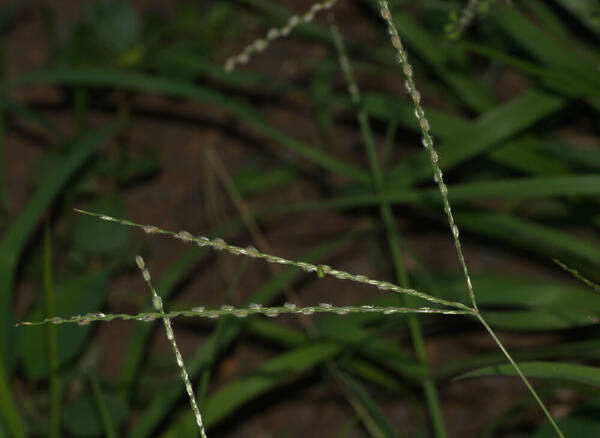
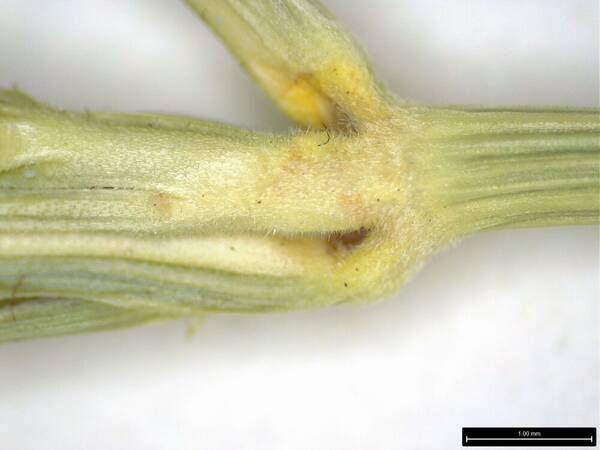
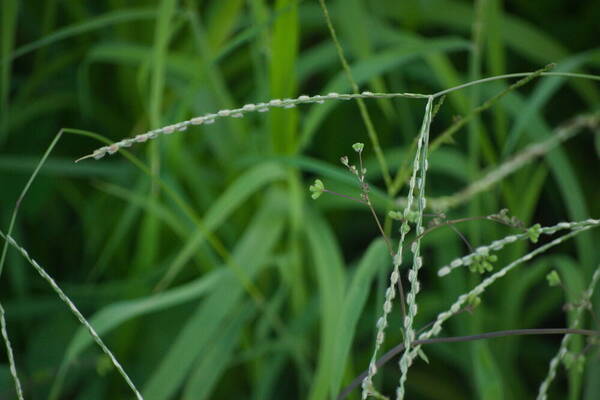
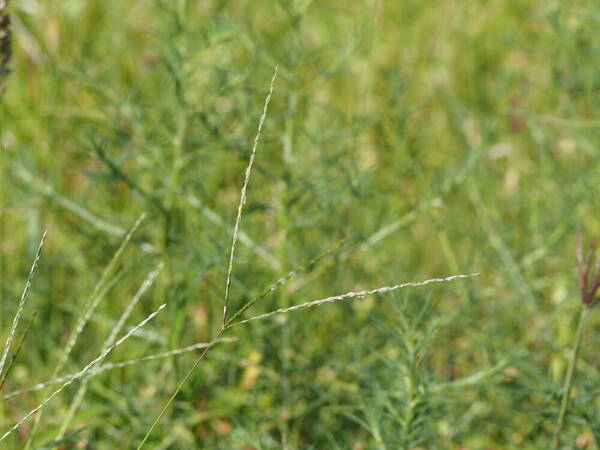
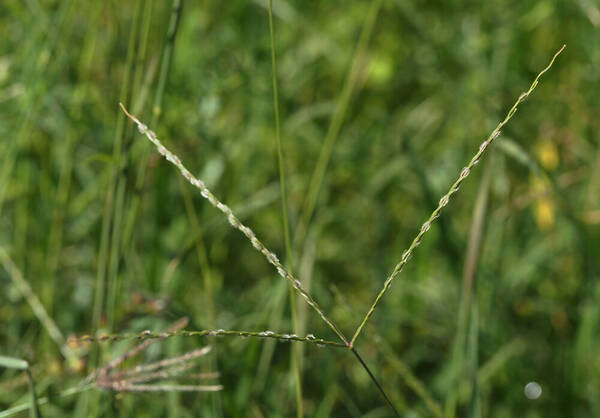
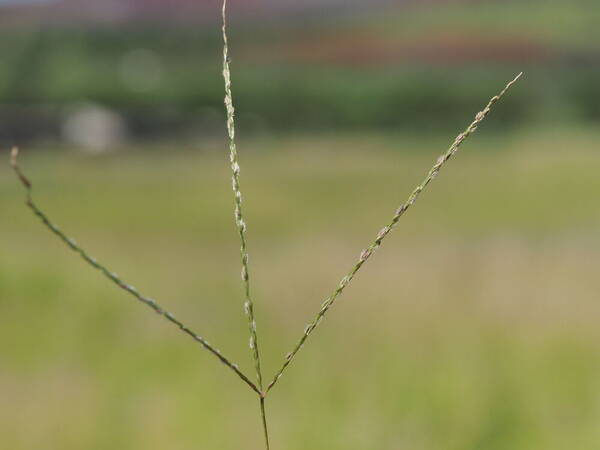
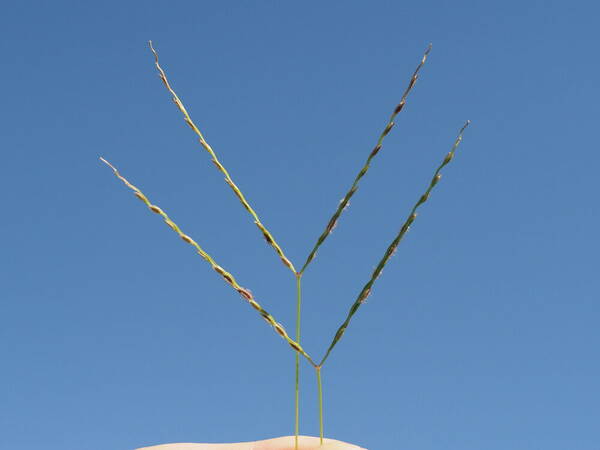
Plant
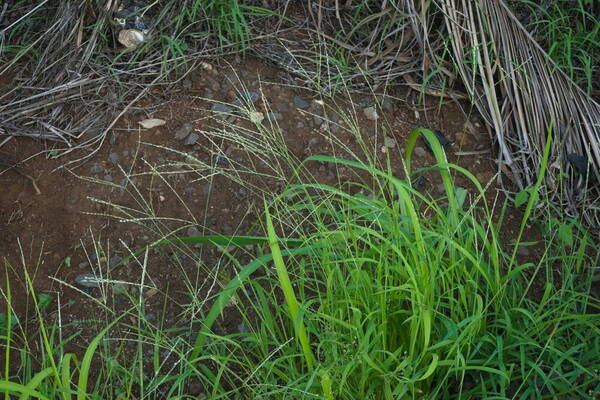
Habit
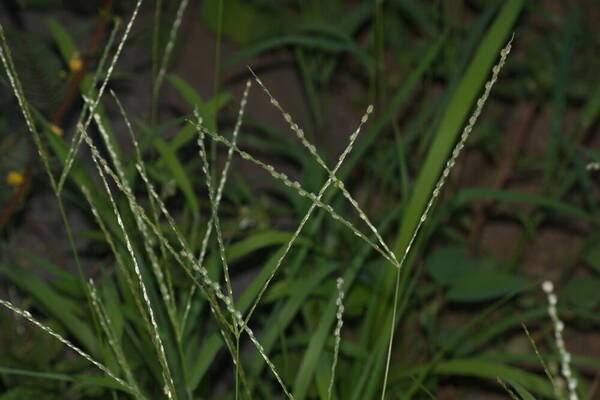
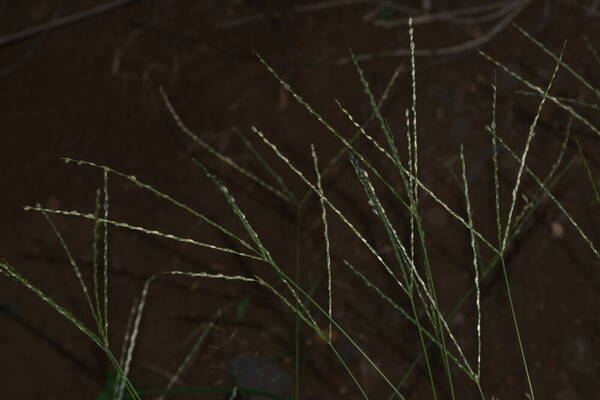
Spikelets
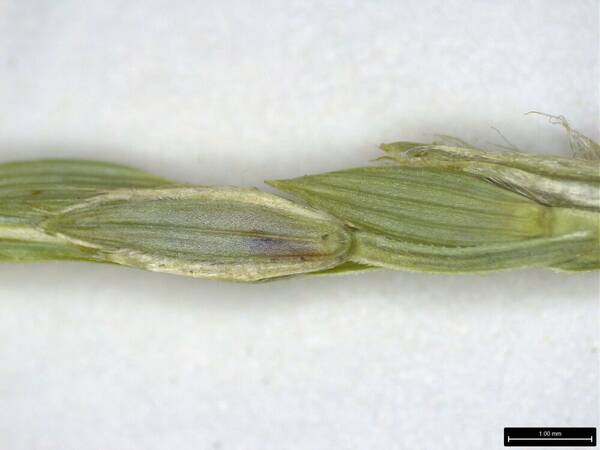
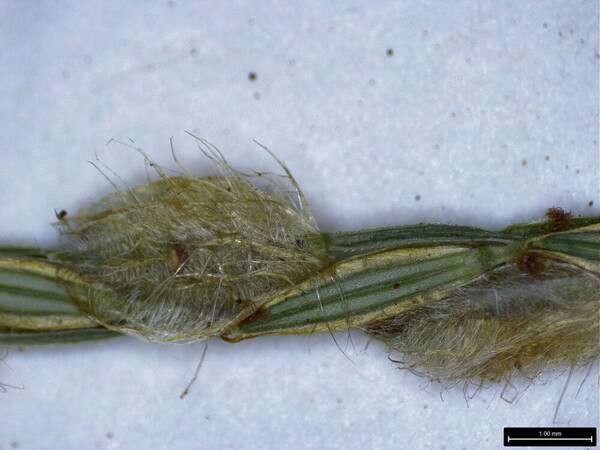
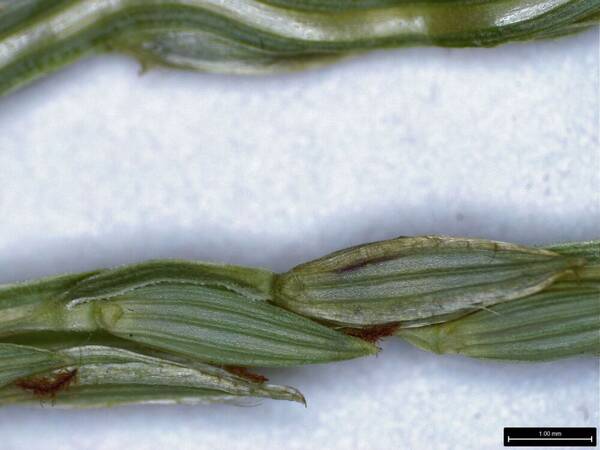
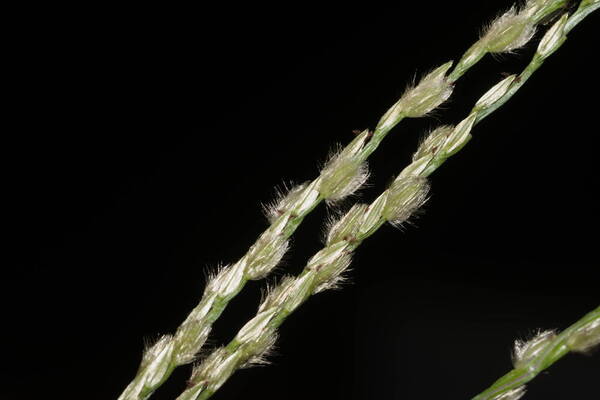
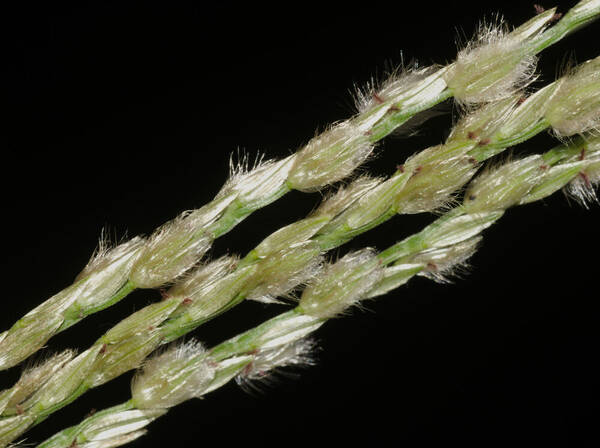
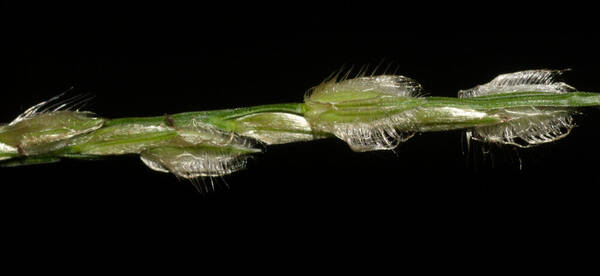
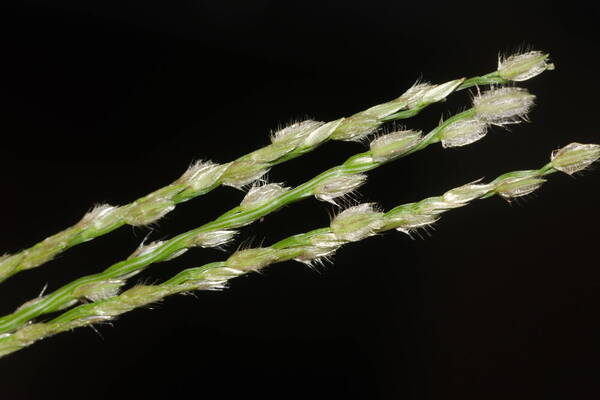

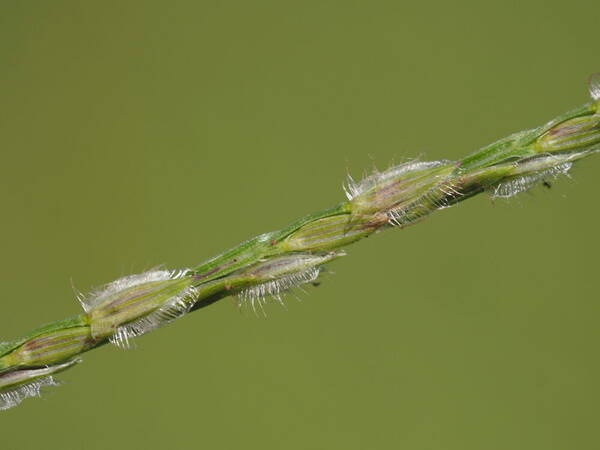
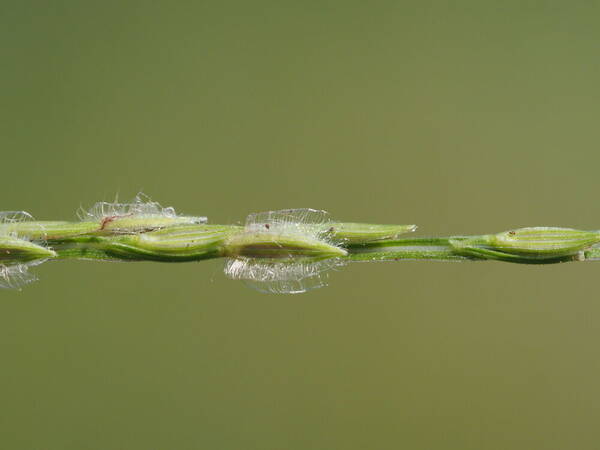
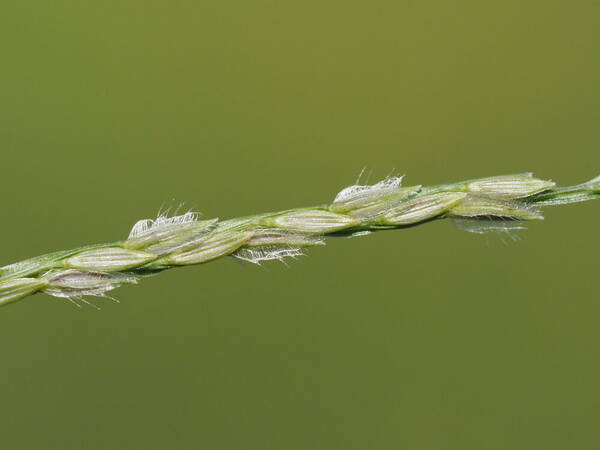
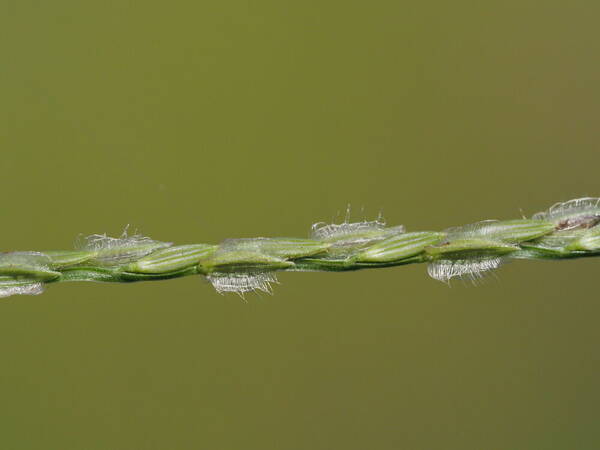
Description
Plants of indefinite duration; sometimes stoloniferous. Culms with erect portion 10- 85 cm, long-decumbent, rooting and branching at the lower nodes. Sheaths with papillose-based hairs or the upper sheaths glabrous; ligules 1-4 mm; blades 3- 14 cm long, 2-9 mm wide, mostly glabrous but the adaxial surfaces with papillosebased hairs basally. Panicles with (2)3-6 spikelike primary branches, these digitate or a few solitary branches below; lowest nodes glabrous or with hairs less than 0.4 mm; primary branches 6.5-21 cm long, 0.6- 1.3 mm wide, axes winged, wings at least 1/2 as wide as the midribs, lower and middle portions bearing spikelets in unequally pedicellate pairs, pedicels not adnate to the branches; secondary branches absent; shorter pedicels about 0.2 mm; longer pedicels to 2 mm. Spikelets 2.6-3.7 mm, spikelet pairs dimorphic in their pubescence and venation pattern of the lower lemmas. Lower glumes absent or to 0.9 mm, deltoid or bifid; upper glumes 1.7-2.8 mm, 1/2 - 3/4 as long as the spikelets, 3-veined; lower lemmas 7-veined, veins smooth; lower lemmas of shortly pedicellate spikelets with 3 equally spaced, glabrous or shortly pubescent central veins, lemma margins and the region between the 2 lateral veins with appressed or spreading, 0.5-1 mm hairs; lower lemmas of long pedicellate spikelets with unequally spaced veins, midvein well-separated from the 3 lateral veins, lateral veins crowded together near the margins, lemma margins and the region between the 2 inner lateral veins hairy with appressed or strongly divergent, 1-2 mm hairs, sometimes also with longer, glassy yellow hairs; upper lemmas of all spikelets usually yellow or gray, sometimes light brown, at maturity; anthers 0.5-0.6 mm. 2n = 54, 72.
(Description source: Barkworth, M.E., Capels, K.M., Long, S. & Piep, M.B. (eds.) 2003. Flora of North America, north of Mexico. Volume 25. Magnoliophyta: Commelinidae (in part): Poaceae, Part 2. Oxford University Press, New York. 783 pp http://floranorthamerica.org/Digitaria_bicornis )